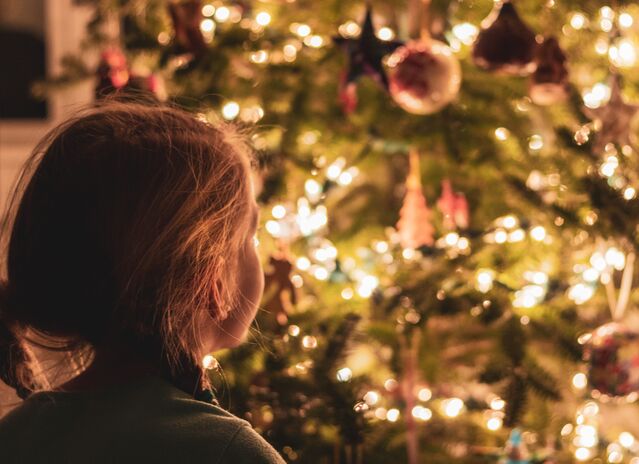Consumer Behavior
What Makes Red the Color of Christmas?
Diverse explanations exist for this holiday favorite.
Posted December 20, 2020 Reviewed by Matt Huston
Christmas is approaching at the speed of light. Depending on where you live, and if not confined at home, you might admire Christmas decorations wherever you go. Many of these decorations are red, some others might be green, gold, or silver.
Have you ever wondered why red is such a popular color for the Christmas season and what it conveys? We did, because we study the affective meanings of color. What we’ve learned might surprise you too. While red has significant affective connotations, its meaning has also been shaped by popular culture.

Diverse meanings of red
Visually, when red decorations are put on a Christmas tree, they beautifully contrast with its green needles, highlighting that red and green are complementary colors. People have profited from the aesthetically pleasing color combination long before our widely available modern Christmas decorations, by hanging red berries and apples on their Christmas trees.
Colors also trigger many different psychological associations. Red can be associated with warmth and fire, very pleasant and cozy during cold winter months. Then again, red carries negative as well as positive connotations. Red is associated with hate and dominance as well as love, passion, and to some extent joy. While differing in the degree of positivity, also known as valence, these associated emotions are all powerful and strong, activating our thoughts and body. When we are angry, we are excited, our hearts beat faster, our hands might get sweaty, we might flex our muscles to feel strong and prepare to act. When we love, especially when we love passionately, we are also excited, cherishing the moment; our hearts beat faster, we likely feel strong and energetic. But love is not only about passion and feeling butterflies. Awaiting Christmas, love can also give us a sense of purpose, strength, calmness, and resilience.
Finally, marketing plays an important role in shaping our opinions and associations, including those with red. Let’s take Santa Claus and his distinct red clothing. Prior to the 20th century, the public image of Santa Claus was not uniform. Drawings show Santa Claus wearing tan, red, or green clothing, depending on the artist. Nowadays in Slavic countries, the local Santa, called Father Frost (Ded Moroz), wears a coat that is largely blue. These latter color choices make sense given the environmental conditions during winter times, being surrounded by snow and ice, as well as evergreen forests. Why then is red so popular around the world, even in countries where snow, ice, and evergreen trees are equally prominent?

An event in the 1930s might explain this shift. The Coca-Cola company hired a Santa Claus wearing a saturated bright red coat to advertise their top drink. This color choice was strategic, because it mirrored the brand color. They chose a big, happy, and slightly chubby Santa with a long white beard. He was a major success, so much so that the company has continued featuring this persona in their advertisements until today. Most importantly, this successful marketing strategy has seemingly shaped popular culture globally. Santa Claus is almost exclusively depicted in saturated red and other Christmas decorations have followed this color scheme.

Lucky Santa
Let’s be reminded of the positive connotations of red the next time we see Santa Claus and red Christmas decorations. It should not be too difficult, because the associative meaning of red and love is globally shared. This universality should help Santa to communicate the message of joy and love while travelling around the world. We hope it also eases the work of the secret elves wrapping Christmas presents for physical and online stores. For now, stay safe, keep socially distancing, and make your holiday season as enjoyable as possible.
References
Jonauskaite, D., Abu-Akel, A., Dael, N., Oberfeld, D., Abdel-Khalek, A. M., Al-Rasheed, A. S., Antonietti, J.-P., Bogushevskaya, V., Chamseddine, A., Chkonia, E., Corona, V., Fonseca-Pedrero, E., Griber, Y. A., Grimshaw, G., Hasan, A. A., Havelka, J., Hirnstein, M., Karlsson, B. S. A., Laurent, E., … Mohr, C. (2020). Universal Patterns in Color-Emotion Associations Are Further Shaped by Linguistic and Geographic Proximity. Psychological Science, 31(10), 1245–1260. https://doi.org/10.1177/0956797620948810
Pridmore, R. W. (2020). Complementary colors: A literature review. Color Research & Application, July, col.22576. https://doi.org/10.1002/col.22576


